Cycle of operation
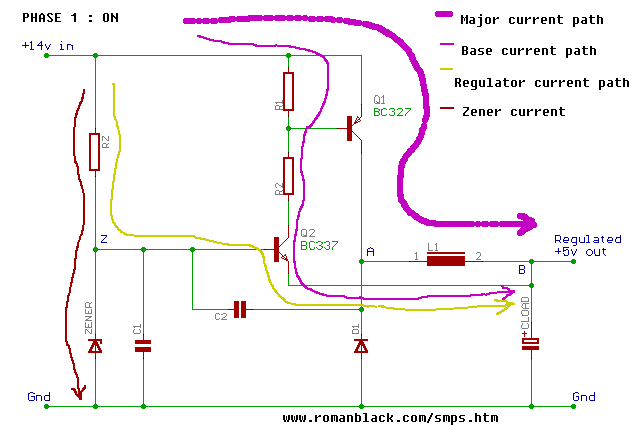
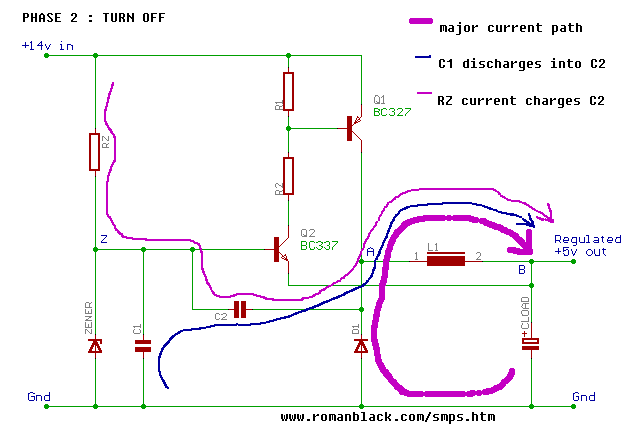
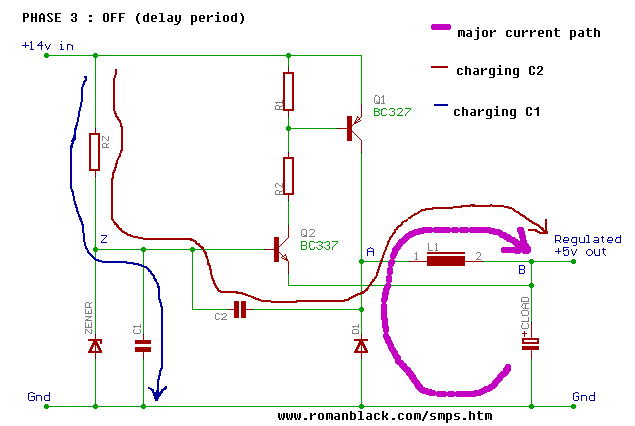
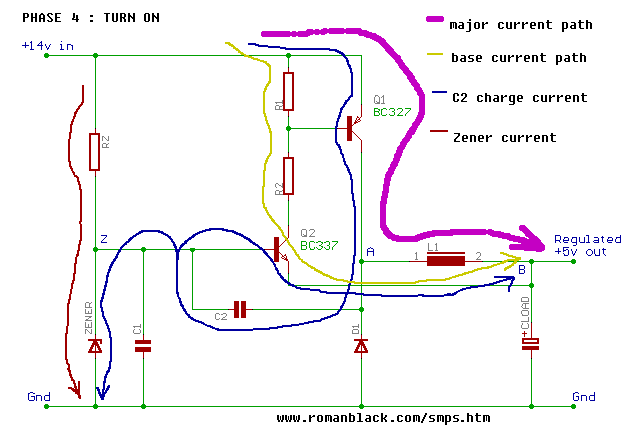

The 4 phases of the cycle can be seen in the wavform above;
(Voltage waveform at point Z (Zener voltage) 1 div = 1v)
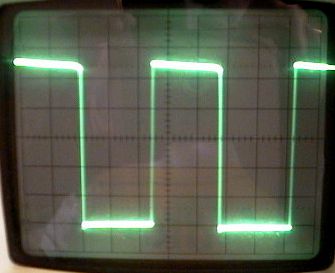






Variable constant current dummy load;
(requires +5v regulated supply also).
Black
regulator
Output ------------,
|
|
+5v --------, |
| |
| | NPN
500 ohm R C TIP3055
pot R<----B 10A 80v
R E
| |
| |
| Rload 8.2 ohms 5w
| | (or 4.7 ohms 5w)
| |
Gnd ---------*-------*--